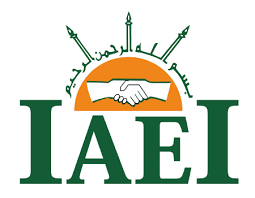Determinants of Halal Tourism Intention in Jabodetabek Indonesia
DOI:
https://doi.org/10.58968/htp.v3i2.427Keywords:
Halal Tourism, Halal Intention, Government RoleAbstract
The purpose of this study is to analyze how the influence of psychographic, socio-demographic, and geographical segmentation on public interest in halal tourism and to analyze the role of the government in the development of halal tourism. This study uses the method of Structural Equation Model (SEM) analysis and qualitative descriptive analysis methods. The data from this study were obtained from primary data (questionnaires) and secondary data (books, journals). The questionnaires were distributed online in the Jabodetabek area. The results obtained in this paper are from 3 variables of tourist characteristics in halal tourism, there is 1 variable that is considered to not affect the wishes of tourists in halal tourism. From psychographic, socio-demographic, and geographic variables, the variable that does not affect the desire of tourists to travel halal is psychographic. Meanwhile, several government's strategies in developing halal tourism are: Making regulations that can simplify and lighten the management of halal certification; Marketing 10 halal tourism destinations to foreign tourists; Conducting guidance for community economic empowerment that supports the operation of the halal tourism sector in Indonesia; and Good management of the halal tourism sector and good corporate governance.
Downloads
References
Andari, C. L. (2017). The influence of service quality and facilities on visitor satisfaction with a case study of visitors to Shila's agritourism.
Arjana, I. G. (2016). Geografi pariwisata dan Ekonomi Kreatif, Cet-2. Jakarta: Raja Grafindo Persada.
Aviolitasona, G. B. (2017). The Influence of Destination Image on Tourist Re-Visit Interest.
Battour, M., Ismail, M., & Battor, M. (2010). "Towards a Halal tourism market”. Tourism Analysis, Vol. 15 No. 4, pp. 461-470.
Battour, M., & Ismail, M. (2014). “The role of destination attributes in islamic tourism”. SHS Web of Conferences, Vol. 12, p. 01077. .
Boglan, E., & Sarıı$sık, M. (2019). “Halal tourism: conceptual and practical challenges”. Journal of Islamic Marketing,, Vol. 10 No. 1, pp. 87-96.
Carboni, M., Perelli, C., & Sistu, G. (2014). “Is Islamic tourism a viable option for Tunisian tourism? Insights from Djerba”. Tourism Management Perspectives, Vol. 11, pp. 1-9.
Fornell, C., & Larcker, D. F. (1981). Evaluating Structural Equation Models with Unobservable variable and Measurment Error. Journal of marketing and Reaserch, 18(1): 39-50.
El-Gohary, H. (2016). “Halal tourism, is it really Halal?”. Tourism Management Perspectives,, Vol. 19 No. Part B, pp. 124-130.
Hariandja, M. T. (2007). Manajemen Sumber Daya Manusia Pengadaan, Pengembangan, Pengkompensasian, dan Peningkatan Produktivitas Pegawai. Jakarta: PT. Grasindo.
Hair, e. a. (2017). A Primer on partial Least Squares Structural Equation Modelling (PLS-SEM) 2nd Edition. Los Angeles, London, New Delhi, Singapore, Washington Dc, Melbourne: SAGE.
Heidjrachman, & Husnan, S. (Ed(4) 1997). Manajemen personalia. Yogyakarta: BPFE.
Henderson, J. (2003). "Managing tourism and Islam in peninsular Malaysia”. Tourism Management, Vol. 24 No. 4, pp. 447-456.
Henseler, J., Ringle, C., & Sarstedt, M. (2014). A new criterion for assessing discriminant validity in variance based structurel equation modeling. Journal of the Academy of Marketing Science, 43(1), pp.115-135.
Hu, L.-t., & Bentler, P. M. (1998). Fit Indices in Covariance Structure Modeling: Sensitivity to Underparametrized Model Misspecification. Psychological Method, Vol 3, No.4, 424-453.
Jafari, J., & Scott, N. (2014). “Muslim world and its tourisms”. Annals of Tourism Research, Vol. 44, pp. 1-19.
Kalebos, F. (2016). Factors that influence the satisfaction of tourists visiting the tourist areas of the island. Jurnal Riset Bisnis dan Manajeme, Vol 4 ,No.3,Edisi Khusus Pemasaran & Keuangan2016: 489-502.
Khan, F., & Callanan, M. (2017). “The Halalification of tourism”,. Journal of Islamic Marketing, Vol. 8 No. 4, pp. 558-577.
Koentjaraningrat. (2000). Pengantar Ilmu Antropologi. Jakarta: Rineka Cipta. hal. 179-181.
Kotler, P., & Keller, K. L. (2009). Edisi 13 Jilid 2. Jakarta: Manajemen pemasaran.
Marbun, B. (2003, hal. 230). Kamus Manajemen. Jakarta: Pustaka Sinar Harapan.
Mantra, I. B. (2003). Demografi Umum. Yogyakarta: Pustaka Pelajar.
Morissan. (2007). Periklanan Komunikasi Pemasaran Terpadu. Jakarta: Ramdina Prakarsa.
Mowen, J. C., & Minor, M. (2002). Consumer Behaviour, atau Perilaku Konsumen, terj. Lina Salim. Jakarta: Erlangga.
Millatina, A., Hakimi, F., Zaki, I., & Yuningsih, I. (2019). Peran Pemerintah Untuk Menumbuhkan Potensi Pengembnagan Pariwisata Halal di Indonesia. Jurnal Manajemen dan Bisnis Indonesia, Vol.5 hal. 96-109.
Ngalimun. (2014). Strategi dan Model Pembelajaran . Yogyakarta: Aswaja.
Nurlatifah, I. (2020). kebijakan Pengembangan pariwisata Halal di Indonesia; Peluang, Tantangan dan Strategi. Jakarta: UIN Syarif hidayatullah jakarta.
Paul, B. H., & Chester, L. H. (1984). Sosiologi Edisi ke Enam. Surabaya: PT. Glora Aksara pratama.
Pitana, I. G., & Gayatri, P. G. (2005). Sosiologi Pariwisata. Yogyakarta: Andi.
Potter, & Perry. (2010). Buku Ajar Fundamental Keperawatan (Konsep, Proses, dan Praktik). Jakarta: EGC.
Ratman, D. R. (2016). Pembangunan Destinasi Prioritas 2016-2019. Jakarta: Kementerian Pariwisata Republik Indonesia.
sayekti, N. W. (2019). Strategi pengembangan Pariwisata Halal di Indonesia (Halal Tourism Development Strategy in Indonesia). Jakarta: Pusat Penelitian, Bidang Ekonomi dan Kebijakan Publik, BKD.
Seaton, A., & Bannet, M.M. (1996). The Marketing Tourism Products:Concepts, Issues and Cases. London: International Thomson Business Press.
Siagian, S. P. (2012). Manajemen Sumber Daya Manusia. Bumi Aksara: Jakarta.
Smith, S. L. (1989). Tourissm Analysis: A Handbook, Harlow. England: Longman Group.
Spillane, J. (1987). Pariwisata Indonesia SejarahdanProspeknya. Yogyakarta: Kanisius, 150 halaman.
Suherlan, H., & Budhiono, Y. (2013). Psikologi Pelayanan. Bandung: Media Perubahan.
Swastha, B. (2002). Manajemen Pemasaran. Edisi Kedua. Cetakan Kedelapan. Jakarta: Penerbit Liberty.
Usman, H., Sobari, N., & Sari, L. E. (2019). Sharia motivation in Muslim tourism definition, does it matter? Journal of Islamic Marketing, Vol. 10 No. 3, 2019 pp. 709-723.
Utama, I. G. (2011). Retrieved from Global Tourism: Trend, Perilaku Wisatawan UsiaLanjut dalam Memilih Aktivitas Wisata. Retrieved from https://tourismbali.wordpress.com/2011/07/18/global-tourism-trend- perilakuwisatawan-usialanjut-dalam-memilih-aktivitas-wisata/
Zamani-Farahani, H., & Henderson, J. (2010). “Islamic tourism and managing tourism development in Islamic societies: the cases of Iran and Saudi Arabia”. International Journal of Tourism Research , Vol. 12 No. 1, pp. 79-89.























